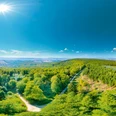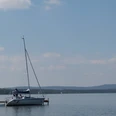Typical of the Weserbergland Nature Park are forested mountain ranges on which deciduous trees grow. Some of these forests were converted to "NatUrwald" decades ago. They are no longer managed and are intended to develop into primeval forests. The Süntel and Ith in particular are home to imposing cliffs, which are among the most beautiful excursion destinations and viewpoints in the nature park.
The Weser and its tributaries and streams flow between the mountain ranges. They are bordered by places steeped in history, which are characterized by buildings from the Weser Renaissance. A special feature of the nature park is the Süntel beech, a bizarre and twisted mutation of the copper beech, which is found nowhere else in the world in such numbers and density as here.
The Weserbergland Nature Park covers 1,150 km2. It offers its approximately 220,000 inhabitants, but also its guests from the neighboring metropolitan areas of Hanover and Bielefeld, highly attractive excursion opportunities. The Weserbergland Trail and the Ith-Hils Trail are particularly popular long-distance hiking trails. The Weser cycle path is one of the busiest in Germany.
The Weser and its tributaries and streams flow between the mountain ranges. They are bordered by places steeped in history, which are characterized by buildings from the Weser Renaissance. A special feature of the nature park is the Süntel beech, a bizarre and twisted mutation of the copper beech, which is found nowhere else in the world in such numbers and density as here.
The Weserbergland Nature Park covers 1,150 km2. It offers its approximately 220,000 inhabitants, but also its guests from the neighboring metropolitan areas of Hanover and Bielefeld, highly attractive excursion opportunities. The Weserbergland Trail and the Ith-Hils Trail are particularly popular long-distance hiking trails. The Weser cycle path is one of the busiest in Germany.
Nearby






